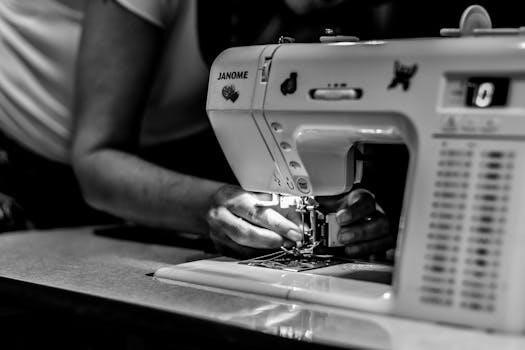Understanding Greater Trochanteric Pain Syndrome (GTPS)
Greater Trochanteric Pain Syndrome, often called GTPS, is a common and painful condition affecting the outer hip area. It is caused by irritation of tissues over the greater trochanter. This includes muscles, tendons, and bursae, which are fluid-filled sacs that cushion bones. It is also known as lateral hip pain or trochanteric bursitis.
Definition and Common Terminology
Greater Trochanteric Pain Syndrome (GTPS) is a condition characterized by pain on the outer side of the hip. It is also frequently referred to as lateral hip pain or trochanteric bursitis. The term ‘trochanteric bursitis’ is somewhat outdated, as inflammation of the bursae isn’t always the primary cause. GTPS encompasses a broader range of issues affecting the soft tissues around the greater trochanter, a bony prominence on the femur. These tissues include the muscles, tendons and bursae. This area is crucial for hip movement and stability. Understanding the correct terminology is vital for accurate diagnosis. The term GTPS is now preferred over the older term trochanteric bursitis. GTPS is not always caused by bursitis alone, but is an inclusive term for pain in that area. It acknowledges the complex nature of the condition.
Causes of GTPS⁚ Irritation and Inflammation
Greater Trochanteric Pain Syndrome (GTPS) arises primarily from irritation and inflammation of the soft tissues surrounding the greater trochanter. These tissues include the gluteal tendons, muscles, and bursae. Overuse, repetitive movements, or direct trauma to the hip can initiate this irritation. Activities involving prolonged walking, running, or standing may contribute to GTPS. Tightness in the iliotibial (IT) band and poor biomechanics can also increase stress on these structures. The compression and friction of the tendons and bursae in the area, especially when the knee moves across the body, lead to inflammation. Other causes may include muscle imbalances, and abnormal control of lower limb movements.
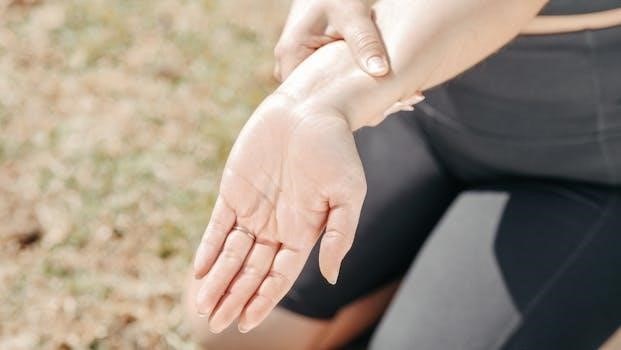
GTPS Symptoms and Diagnosis
GTPS is characterized by pain on the outer hip, thigh, or buttock area. It often worsens when lying on the affected side. Pain may also increase with activities like walking or prolonged standing.
Common Pain Locations and Sensations
The pain associated with Greater Trochanteric Pain Syndrome (GTPS) is typically felt on the outer side of the hip, specifically around the bony prominence known as the greater trochanter. Patients often describe a deep, aching pain that can radiate down the outer thigh and sometimes into the buttock area. The sensation can vary from a dull ache to a sharp, stabbing pain, especially during certain movements or when pressure is applied to the affected area. Some individuals may experience a burning sensation or tenderness to the touch over the greater trochanter. The pain can be intermittent or constant and may worsen after prolonged activity or periods of rest. It is crucial to recognize the typical location and character of the pain to differentiate GTPS from other hip conditions, ensuring accurate diagnosis and appropriate management strategies.
Pain Aggravation Factors
Several factors can exacerbate the pain associated with Greater Trochanteric Pain Syndrome (GTPS). Lying on the affected side is a common trigger, as this puts direct pressure on the inflamed tissues. Activities that involve prolonged periods of standing, walking, or running can also intensify the pain due to increased strain on the hip joint. Exercises, particularly those involving hip abduction or external rotation, such as the clam exercise, can further irritate the tendons and bursae. Crossing the legs or moving the knee across the body can compress the structures around the greater trochanter, leading to increased discomfort. Additionally, repetitive movements or sudden increases in activity level can contribute to symptom flare-ups. Understanding these aggravating factors is crucial for managing GTPS and modifying daily activities to reduce pain.
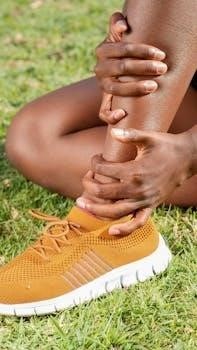
Exercise Therapy for GTPS
Exercise therapy is crucial for managing GTPS, focusing on both strengthening and stretching. These activities aim to reduce pain, improve mobility, and enhance the support of the hip region.
Importance of Strengthening and Stretching
Strengthening and stretching exercises are vital components in the effective management of Greater Trochanteric Pain Syndrome (GTPS). Strengthening exercises are essential for building muscle support around the hip, reducing strain on the irritated tissues. By targeting muscles such as the gluteals, individuals can enhance hip stability and improve overall function. This added muscle support helps to relieve pressure on the tendons and bursae, contributing to pain reduction. Moreover, improved muscle strength can help correct any movement abnormalities that may be contributing to the condition. Stretching is equally important as it helps to alleviate tightness in the hip and surrounding muscles. Gentle stretching can increase flexibility and reduce compression in the area. Regular stretching helps to prevent stiffness and promote a more comfortable range of motion, thus easing pain. The combination of strengthening and stretching provides a balanced approach to rehabilitation, addressing both the underlying weakness and tightness associated with GTPS.
Examples of Effective Exercises
Effective exercises for Greater Trochanteric Pain Syndrome (GTPS) often include a combination of strengthening and stretching movements. For strengthening, exercises like the side-lying leg lift, which targets the gluteal muscles, and hip bridges, which engage the posterior chain, are beneficial. Another useful exercise is the standing hip abduction, using a resistance band to add intensity. These exercises help to build muscle strength, which can reduce strain on the hip. For stretching, exercises such as the piriformis stretch, achieved by pulling a bent knee towards the opposite shoulder, and the standing quadriceps stretch, help to increase flexibility and relieve tightness. Another stretch involves gently pulling the knee across the body to stretch the outer hip. It’s crucial to perform these exercises slowly and to ease off if pain increases. The exercises are often suggested for both rehabilitation and for general improvement.
Isometric and Isotonic Exercises
Isometric and isotonic exercises both play important roles in managing Greater Trochanteric Pain Syndrome (GTPS). Isometric exercises involve muscle contraction without changing the muscle length, such as holding a leg lift in a specific position, which helps to improve muscle strength without stressing the joint. An example is the hip abductor isometric exercise performed against a wall. These can be done in short lever arm, gravity-eliminated positions. Conversely, isotonic exercises involve muscle contraction with a change in muscle length, such as performing leg raises or squats. Isotonic exercises can be done with resistance bands to improve muscle strength and endurance. Both isometric and isotonic exercises contribute to a comprehensive rehabilitation program for GTPS. It’s important to start slowly and progress gradually, especially when incorporating isotonic exercises which can be more challenging.
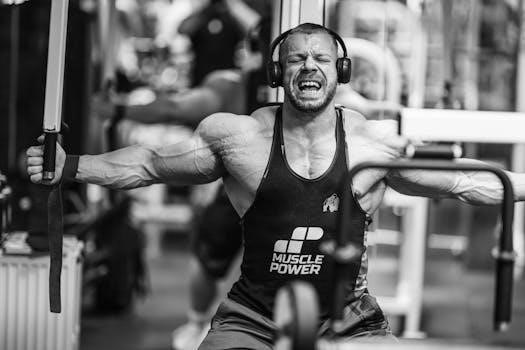
Additional GTPS Treatment Options
Beyond exercise, treatments like cortisone injections can help reduce inflammation. Physical and manual therapy can also be beneficial. These are often used when exercise alone isn’t enough, to help manage GTPS.
Cortisone Injections
Cortisone injections are a common treatment option for Greater Trochanteric Pain Syndrome (GTPS), often considered when initial conservative measures, like exercise, haven’t provided sufficient relief. These injections deliver corticosteroids directly into the affected area, typically around the greater trochanter, aiming to reduce inflammation and alleviate pain. Research suggests that cortisone injections can be effective, particularly in the short term, with some studies showing pain reduction lasting up to a year. It’s important to note, though, that while cortisone can effectively manage pain, it’s not a long-term solution, and it may not be as effective as exercise in some individuals, especially for addressing the underlying causes of GTPS. Cortisone injections are often more beneficial for bursitis. They are usually used in conjunction with other treatments.
Physical Therapy and Manual Therapy
Physical therapy plays a crucial role in the management of Greater Trochanteric Pain Syndrome (GTPS), employing a range of techniques to address pain and improve function. A physical therapist can create a tailored program, considering an individual’s specific needs and limitations. Manual therapy, a hands-on approach, may also be incorporated, which includes soft tissue mobilization to release tension and improve joint mobility. These treatments, combined with specific exercises, work to reduce pain, strengthen weak muscles, and restore proper movement patterns. Physical therapy helps you regain strength, flexibility, and control of your lower limb movements. Posture and movement mechanics education are also important components of physical therapy. The aim is to allow people to return to normal activities.
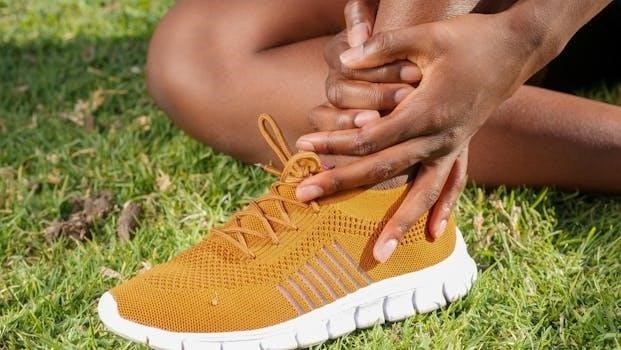
When to Seek Professional Help
It’s important to consult a healthcare professional if your hip pain persists or worsens despite self-care. Therapists can create tailored routines to ensure safe and effective recovery, and diagnose the condition accurately.
Consulting Therapists for Tailored Routines
Seeking professional guidance from a physical therapist or healthcare provider is crucial for effective management of Greater Trochanteric Pain Syndrome (GTPS). A therapist can accurately diagnose the condition, differentiating it from other hip issues like osteoarthritis. They will assess individual needs, considering factors such as pain levels, activity limitations, and overall health. Based on this evaluation, a therapist will design a personalized exercise program. This ensures that exercises are not only effective but also safe, preventing further irritation or injury to the affected area. Therapists will monitor progress and make necessary adjustments to the routines as needed. They can also provide education on proper posture and movement mechanics to support long-term recovery, incorporating manual therapy techniques and other modalities to provide the most comprehensive care. This customized approach is essential for optimal results.

